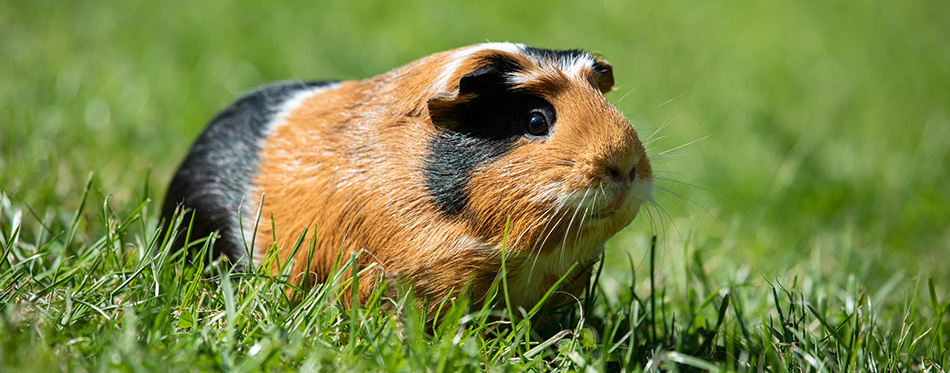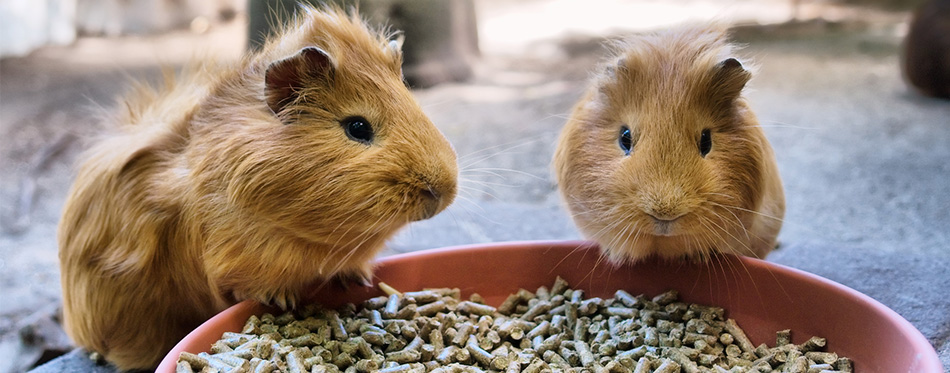Don’t let the name fool you, guinea pigs are nothing close to the size of an actual pig neither are they from Guinea. Cute, furry and about the size of a hamster, something about the word guinea pig often calls to mind laboratory-based medical research. Some very kind individuals have saved many a guinea pig from the sterile setting of a laboratory to a cushy life as a beloved family pet. Younger family members, in particular, often form strong bonds with their pet guinea pig bringing on significant emotional trauma when it dies. Did you just get a new pet guinea pig for your kids? Do you wonder how long you have until it’s time for the ‘where do dead pets go?’ talk? We can help you narrow things down.

History of the Guinea Pig
Tiny as they are, guinea pigs date all the way back to the 16th century where they were popular family pets. They are rather amiable little creatures that are fairly easy to care for and feed. What’s more, they also make great outdoor companions as they can easily fitting into your coat pocket. Over time, many guinea pigs have been specifically bred resulting in their diversity and wide array of coat colors. In some regions such as the Andes Mountains, guinea pigs are a major source of meat. To better cater to the demand for guinea pig meat and to promote the eating of it in regions outside South America, a breeding program was set up in Peru to breed larger sized guinea pigs. It can sound pretty barbaric that your little cute pet could be considered food for others. Such is the life of the versatile guinea pig.
Sometime around the 17th century, the guinea pig also managed to draw the attention of scientists with it becoming the animal of choice in medical experiments and research work to treat human diseases such as tuberculosis and diabetes. Clearly, Guinea pigs have truly played a significant role in saving mankind.
How Long Do Guinea Pigs Live
On average, a guinea pig lives between five to seven years. Does that sound so short to you? Truth is, it is definitely short. When compared to its close relative – the gerbil – whose entire life span is roughly three years, the guinea pig’s life at seven years comes off looking like a century. The five to seven-year guinea pig life span is only common in those raised in captivity. On the other hand, Guinea pigs in the wild tend to have shorter lives with their lifespan being between one to four years. Guinea pigs fortunate enough to receive medical care and special diets have been known to live up to ten years. The oldest recorded guinea pig lived till the ripe old age of fourteen.
Health Status Matters
Guinea pigs in poor health have a significantly reduced life span than healthy ones do. If you have a pet guinea pig and are keen on it living to the maximum years possible of its lifespan, there are a few health indicators to be on the lookout for. Similar to humans, guinea pigs bodies cannot produce their own Vitamin C and as such, have to depend on external sources for it. Without Vitamin C, a guinea pig could easily come down with scurvy, a condition that weakens the joints, causes blood clotting problems and rough skin among other symptoms. Coming down with scurvy could shorten a guinea pig’s lifespan. That’s why it’s vital to protect your pet by incorporating vitamin supplements into its diet.
Poor hygiene can literally kill a guinea pig way ahead of its expected lifespan, as they are particularly vulnerable to gastrointestinal issues brought on by exposure to feces or food poisoning. You’d rather your guinea pig be around for as long as possible, right? Easy as pie. So aim to keep its living area spick and span.
Diarrhea is another guinea pig killer with a strong attack being able to kill it within a matter of days. Fortunately, diarrhea is not a very difficult condition to diagnose even by a layperson. The minute you begin to notice your pet has runny excreta, take it to the vet for immediate medical attention. While doing that, discontinue any greens you might have been feeding it. Feed it with grass hay instead, while giving it plenty of water to rehydrate it.

Balanced Diet Matters
Just as humans that regularly consume a healthy balanced diet are easily recognizable by their glowing skin and strong bones, a healthy guinea pig is equally recognizable. For a guinea pig though, grass hay is a staple that should form the basis of their diet. It can readily be found in pet shops as well as other guinea pig food varieties. However, do not go overboard stuffing your pet with random foodstuffs. Many of such foods are usually high in calcium, a major culprit in guinea pig urinary infections.
You can also add a little variety to your guinea pig’s diet with some additional greens. Those little guys go crazy over leaves especially lettuce and cilantro. Even juicy fruits like strawberry are occasional treats you can add in small quantities – though be careful not to have an overweight pet on your hands. Ensure your guinea pig takes in its daily Vitamin C quota, especially as its tiny body can’t produce any. Berries generally contain high amounts of Vitamin C as do tomatoes, kiwi and broccoli. With your guinea pig chomping on these fruits with its tiny mouth, life span shortening diseases such as scurvy can be kept at bay.
Guinea pigs also drink a lot of water, so keep its water bowl regularly filled and cleaned to avoid infections. Some foods are anathema to a guinea pig doing it no good. In fact, they are even poisonous. Potatoes are topping the list. Much as guinea pigs really love leafy greens, tomato leaves, or rhubarb, they are not among the recommended greens to feed your pet.

